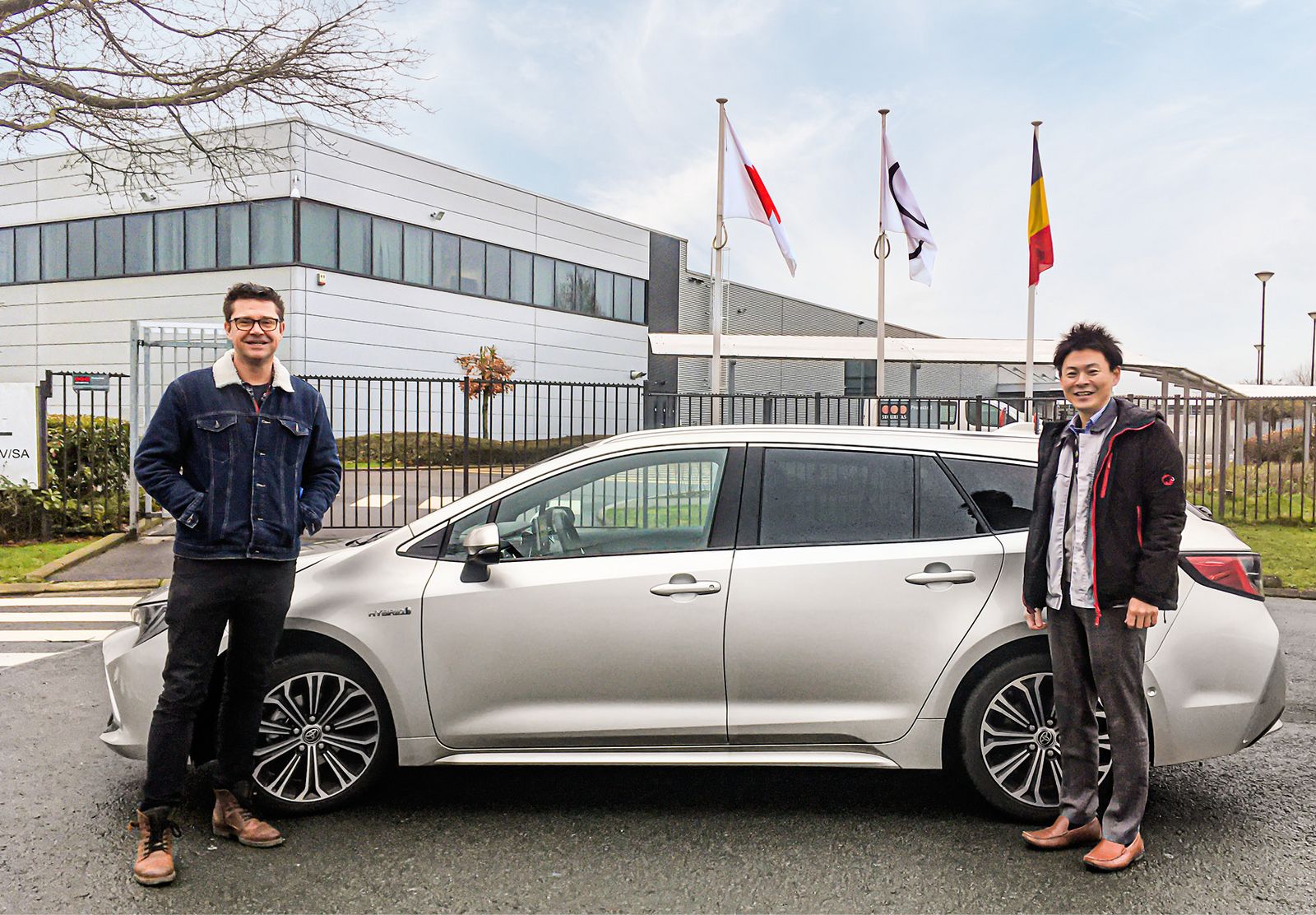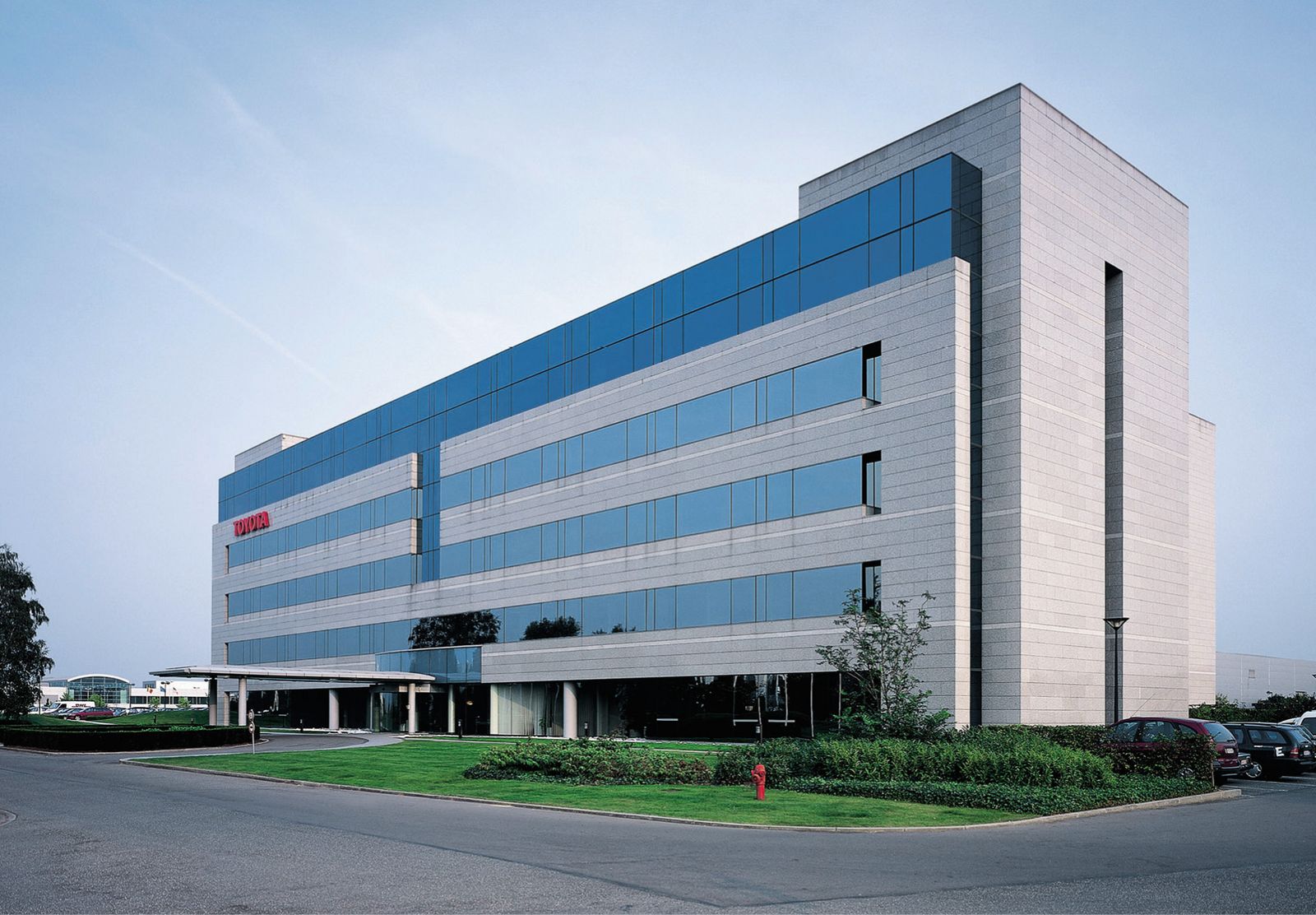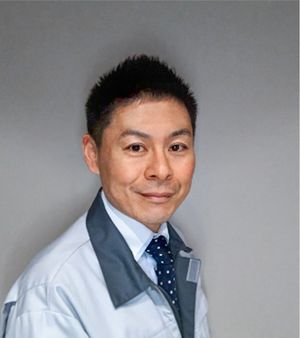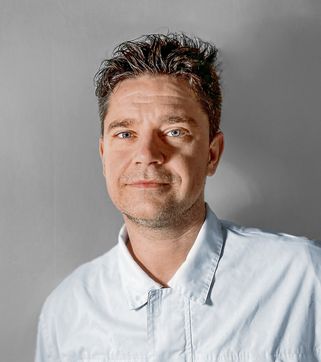DEVELOPED LOCALLY, USED GLOBALLY
For the first time ever, Toyota Motor Europe, Brussels-based European subsidiary of Toyota Motor Corporation in Japan, is developing a lubricant for one of its European plants. The cooperation with supplier FUCHS is key here – and has led to a product that Toyota is now even set to deploy worldwide.
In 2016, Toyota Motor Europe (TME) began refurbishing the production line for the Corolla range at its UK plant. A renewal that called for a new corrosion protection coating. TME Material Engineer Véronique Vandenberghe and Takahisa Sudo, Material Engineer at Toyota Motor Corporation (TMC), formed a task force with the objective of finding a European partner for the development of a new corrosion protection coating. They found their match in FUCHS. In 2018, Yu Takada joined their team as General Technical Manager. One year later, Johan Bosmans, coating specialist in the Paint Department at TME, came on board. Together, they not only achieved their goal of developing the required coating, they also did so entirely in-house together with Toyota Motor UK’s paint shop and the European partner from Mannheim.
Although initially earmarked for use in the Corolla, which is produced in Great Britain, the newly developed anti-corrosive coating is now set to be used worldwide in numerous models. In fact, global approval has already been issued by Toyota Motor Corporation in Japan.


SEARCHING FOR THE RIGHT PARTNER
With development of the coating – which has been named “Anticorit CPX”, standing for “corrosion protection thixotropic” – the team led by Takada and Bosmans has demonstrated a new quality. In fact, the European subsidiary is now not only capable of introducing materials, but also developing them together with local European suppliers. This is a change that the Toyota Motor Corporation R&D Headquarters wholeheartedly supports. “We are very thankful that we have been given this opportunity by Toyota Headquarters”, comments Yu Takada.
One factor that called for the new corrosion prevention coating was the short application area in the UK plant. The challenge here was to find a new approach to prevent potential dripping of the coating after application. This could only be solved by adapting the rheological behavior of the material. Curing needed to take place much quicker. Another key factor favoring the development of a new product was that Anticorit CPX is used to protect cavities, specifically the rocker area – the section that runs below the doors and is part of the car’s body. To be applicable here, the material must be compatible with the spray technology in use. On top of that, it needs to be suitable for recirculation in the pipelines without any loss in performance, for example during short periods of shut down of the plant.
“Given these special requirements, Véronique Vandenberghe from Toyota Motor Europe and Takahisa Sudo from Toyota Motor Corporation were tasked with finding the right partner,” explains Takada. They ultimately found what they were looking for with FUCHS and the decision to cooperate was then made relatively quickly.

“Thanks to this project, I believe that Toyota Motor Corporation in Japan will delegate more material development to overseas affiliates in the future.”
YU TAKADA, TECHNICAL GENERAL MANAGER RESEARCH & DEVELOPMENT MATERIAL ENGINEERING DIVISION
Global locality for greater efficiency
The waxy polymer Anticorit CPX had already been in use at Toyota in the US. It was applied manually by car dealers at the request of customers as a second anti-corrosion layer on top of the upper coating. The lubricant specialist therefore adapted this product to the requirements of the new production line. “FUCHS was quick to understand our special needs. Its R&D department is also familiar with all approved raw materials and formulation variants with which this product can be produced worldwide,” stresses Johan Bosmans. “This was definitely a key factor in securing smooth customization of Anticorit CPX to meet local requirements.”

“The R&D department at FUCHS is familiar with all approved raw materials and formulation variants with which this product can be produced worldwide. This was definitely a key factor in securing smooth customization of Anticorit CPX to meet local requirements.”
JOHAN BOSMANS, RESEARCH & DEVELOPMENT MATERIAL ENGINEERING DIVISION – PAINT DEPARTMENT
Yet meeting local requirements is only half of the story. “When it comes to lubricants, coatings, or paints, Toyota does not think in terms of vehicle models,” explains Bosmans. As such, Toyota never intended Anticorit CPX to be a coating that would be used only for a specific model or in a specific region: “The coating is currently being used at the Toyota manufacturing plant in Great Britain, but the application scope can span across various models, both in Europe and globally.”
The reason for this is clear: efficiency. The more uniformly a global corporation can design its production processes worldwide, the lower the associated costs. This applies not only to supply chain management, but also with regard to the anticipated risks: “Let us assume that a supplier's main facility is forced to close for whatever reason, and they do not produce the product anywhere else. We would then have no option but to stop our production operations. However, if a supplier like FUCHS produces a product for us at various locations worldwide, this risk simply disappears,” explains Bosmans.



An effort that pays off
“To gain global approval for Anticorit CPX, we adjusted the rheology of our existing product to prevent it from dripping or migrating. At the same time, we replaced some ingredients with more modern ones to lower the odor and emission characteristics of the newly developed product,” explains Georgios Savvanis, Head of Global Product Management Corrosion Preventives & Cleaners at the FUCHS location in Mannheim. “We did not need to make any further changes to our formulation.” However, a very large number of tests did have to be performed. After all, compatibility with the various local requirements of Toyota's locations around the world had to be guaranteed. This required a great effort, but one which paid off in the end. As Takada reports: “We are always interested in having products that we can use globally. Having fewer suppliers also leads to less complex supply chains and less elaborate risk management.” He goes on to add: “It is quite unusual for lubricant producers to be able to globalize their products to the extent that FUCHS can.”
“We are always interested in having products that we can use globally. Having fewer suppliers also leads to less complex supply chains and less elaborate risk management.”
YU TAKADA, TECHNICAL GENERAL MANAGER RESEARCH & DEVELOPMENT MATERIAL ENGINEERING DIVISION
Communication is the key
FUCHS feels certain that communication and collaboration on a global as well as local level, across functions and between departments as well as across affiliates, is a key element in making a success of such a complex development cooperation. Ken Nakamura works from the FUCHS location in Harvey, Illinois, and is responsible for the lubricant company's key accounts in Japan. Together with Georgios Savvanis, he manages both coordination and communication with Toyota's R&D department. “We actually established a dedicated structure for this and communicate with Toyota simultaneously at both global and local level. As such, we talk to corporate management, yet also have local contacts in place at each of Toyota's foreign subsidiaries.” This is an approach that Toyota really appreciates. Takada: “Maintaining open and transparent communication with the development partner is absolutely critical for such a complex process as coating development.” Contact with the R&D department at FUCHS SCHMIERSTOFFE GmbH was very close. “Everything that FUCHS did was well founded and communicated transparently.” This is an important point for a leading automotive manufacturer that attaches great value to precisely understanding the products it uses. It also represents a milestone on the path to Toyota Motor Europe engaging in independent, local development work.
